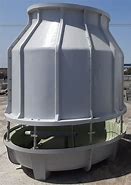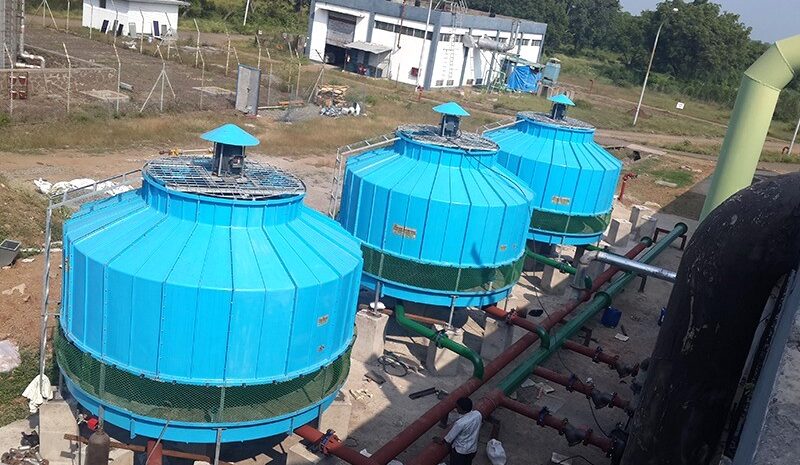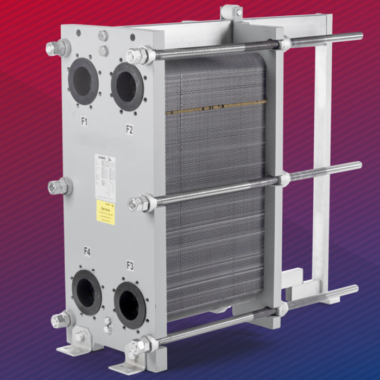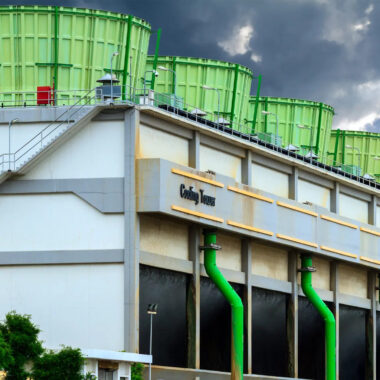A History of Cooling Towers From Early to Modern
A History of Cooling Towers From Early to Modern
Cooling towers have a wealthy history of development, advancing significantly over the centuries to meet the changing requests of different industries. This travel from rudimentary plans to advanced, highly efficient round towers reflects advancements in building, materials science, and environmental contemplations. Let discuss about a history of cooling towers from early designs to modern round towers,
Early Designs: Beginnings of Evaporative Cooling
1) Ancient Techniques :
- The concept of evaporative cooling dates back to antiquated civilizations. For instance, Egyptians utilized porous clay containers to cool water through evaporation. This guideline laid the foundation for later cooling innovations.
- Ancient Rome saw the utilize of aqueducts and water channels in structures just like the Baths of Caracalla, which incorporated early forms of evaporative cooling to preserve comfortable temperatures.
2) Industrial Revolution :
- The coming of the Industrial Revolution within the 18th and 19th centuries stamped a critical jump in cooling innovation. Factories and control plants required productive cooling systems to oversee the heat created by steam motors and industrial processes.
- Early cooling towers were frequently simple structures, utilizing normal drafts and water sprayed over surfaces to dissipate heat. These were typically developed from wood and had open plans to encourage airflow.
Development of Mechanical Draft Cooling Towers
1) Early 20th Century Innovations :
- The early 1900s saw the introduction of mechanical draft cooling towers, which utilized fans to upgrade airflow and improve cooling productivity. These towers were more successful than natural draft plans, especially in larger industrial applications.
- Wooden cooling towers continued to be common, but there was a gradual move towards utilizing steel and concrete for greater solidness and fire resistance.
2) Advances in Technology :
- By the mid-20th century, forced draft and induced draft cooling towers got to be prevalent. Constrained draft towers use fans at the base to push air through the tower, whereas induced draft towers have fans at the beat to pull air upwards.
- The utilize of these mechanical systems permitted for more exact control over cooling forms and the capacity to handle larger heat loads.
Contemporary Innovations and Sustainability
1) Energy Efficiency and Environmental Considerations :
- Today, cooling towers are planned with a solid emphasis on vitality effectiveness and environmental sustainability. Innovations such as variable frequency drives (VFDs) for fan speed control, advanced fill materials, and water-saving technologies are increasingly common.
- Modern cooling towers moreover incorporate features to minimize drift (water misfortune), decrease noise pollution, and guarantee compliance with exacting environmental regulations.
2) Smart Technologies :
- The integration of smart technologies and IoT (Internet of Things) has revolutionized cooling tower operation and maintenance. Real-time observing, prescient maintenance, and automated control systems upgrade reliability and optimize execution.
- These progressions allow for superior resource administration, reduced operational costs, and progressed overall efficiency of cooling forms.
Conclusion
The history of cooling towers could be a testament to human ingenuity and the persistent pursuit of more productive, reliable, and sustainable cooling arrangements. From antiquated evaporative techniques to modern round mechanical draft towers, these structures have advanced to meet the requests of industrial development and environmental stewardship. As innovation proceeds to progress, cooling towers will undoubtedly play a basic part in overseeing heat and supporting different businesses in a sustainable way.







